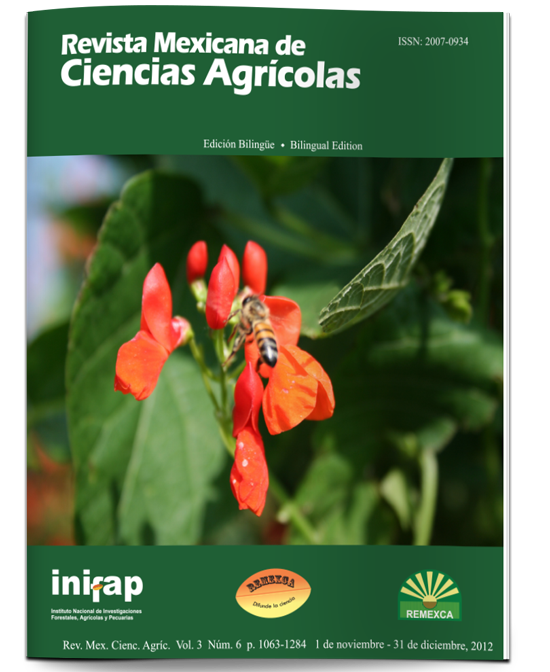The INIFAP collection of runner bean (Phaseolus coccineus L.) I. Geographical distribution of collection sites
DOI:
https://doi.org/10.29312/remexca.v3i6.1375Keywords:
geographical information systems, genetic variability, ecologic variabilityAbstract
The runner bean (Phaseolus coccinus L.) is native to the highlands of Mesoamerica, where it has been cultivated since pre-Columbian times, recent studies show that was domesticated 2 200 years ago in the Valley of Tehuacan, Puebla, Mexico. It is grown annually, but in the wild perennial grows in humid regions at altitudes of more than 1 800 meters above the sea. After the common bean, runner bean is the second most important species for food of Mexicans, and the National Institute for Forestry, Agriculture and Livestock protects 798 accessions of native Mexican varieties under ex situ conservation. As the genetic and phenotypic variability of plants is influenced by ecological factors, is necessary to know the geographical distribution and edaphoclimatic characteristics of the germplasm collection sites of Phaseolus coccineus L. To do this, in 2009 in the laboratory of Geographic Information Systems of INIFAP were mapped the geographical distribution of collection sites of the 798 accessions of Mexican landraces of the cultivated form, with its edaphoclimatic characteristics. For this purpose we used the geographical coordinates of collection sites, maps of physiographic regions of the National Institute of Statistics, Geography and Informatics (INEGI) and the information of climate, soil and vegetation from the National Commission for Knowledge and use of Biodiversity (CONABIO). Maps were obtained and visualized with computer programs “Earth Resources Data Analysis System” and “Environmental System Research Institute”. 81% of the accessions of runner bean were collected in the Neovolcanic axis and the Sierra Madre Oriental in the subprovinces Lakes and Volcanoes of Anáhuac and Carso Huasteco. The most represented climates were temperate humid and semi-arid, mostly associated to mixed forest of oak and pine in eutric cambisol soil.
Downloads
Downloads
Published
How to Cite
Issue
Section
License
The authors who publish in Revista Mexicana de Ciencias Agrícolas accept the following conditions:
In accordance with copyright laws, Revista Mexicana de Ciencias Agrícolas recognizes and respects the authors’ moral right and ownership of property rights which will be transferred to the journal for dissemination in open access. Invariably, all the authors have to sign a letter of transfer of property rights and of originality of the article to Instituto Nacional de Investigaciones Forestales, Agrícolas y Pecuarias (INIFAP) [National Institute of Forestry, Agricultural and Livestock Research]. The author(s) must pay a fee for the reception of articles before proceeding to editorial review.
All the texts published by Revista Mexicana de Ciencias Agrícolas —with no exception— are distributed under a Creative Commons License Attribution-NonCommercial 4.0 International (CC BY-NC 4.0), which allows third parties to use the publication as long as the work’s authorship and its first publication in this journal are mentioned.
The author(s) can enter into independent and additional contractual agreements for the nonexclusive distribution of the version of the article published in Revista Mexicana de Ciencias Agrícolas (for example include it into an institutional repository or publish it in a book) as long as it is clearly and explicitly indicated that the work was published for the first time in Revista Mexicana de Ciencias Agrícolas.
For all the above, the authors shall send the Letter-transfer of Property Rights for the first publication duly filled in and signed by the author(s). This form must be sent as a PDF file to: revista_atm@yahoo.com.mx; cienciasagricola@inifap.gob.mx; remexca2017@gmail.
This work is licensed under a Creative Commons Attribution-Noncommercial 4.0 International license.



